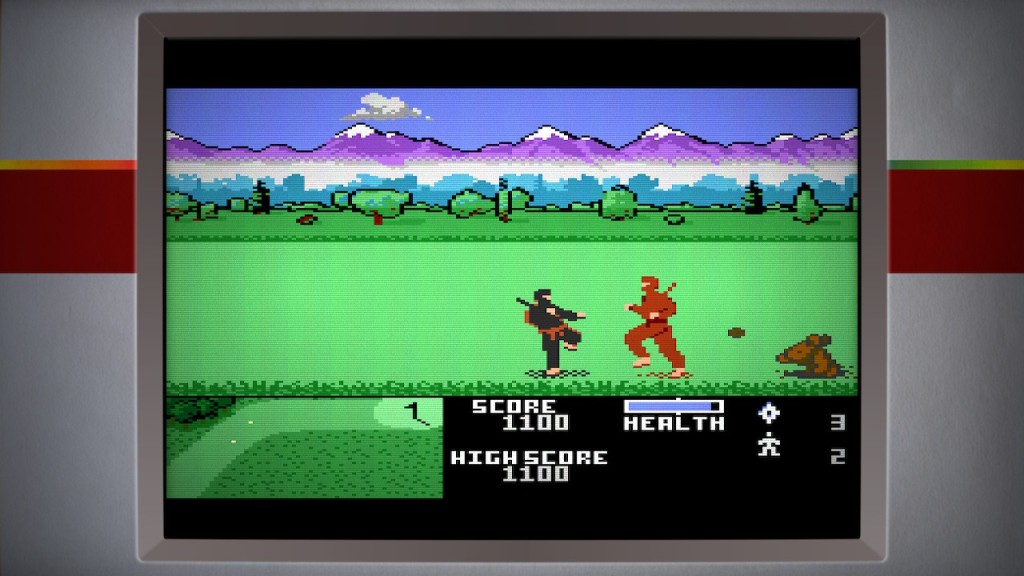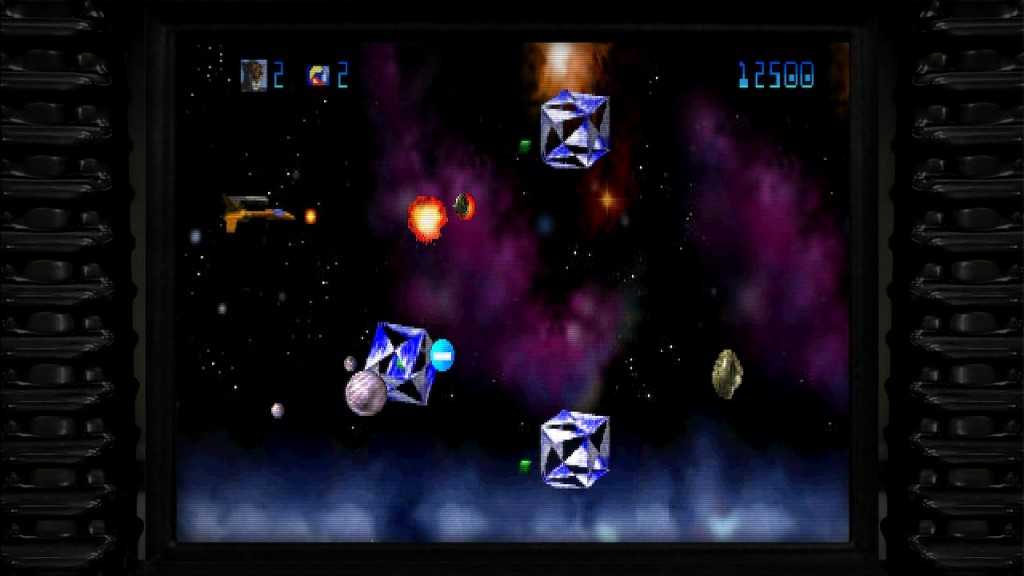Atari 50: Retro done right, again

Back in 2019, I wrote a post about the SNK 40th Anniversary Collection, and raved about how impressively well-put-together it was. The collection of games was the cake, but the icing was the wealth of historical information. SNK40 was lovingly compiled by Digital Eclipse, and to me, was the epitome of classic game collection titles.
Now, Digital Eclipse may have — no, they definitely have — outdone themselves with what may be one of the most significant anniversary collections in video game history. To put it bluntly, Atari 50 needed to be spectacular. And it is!

For the most part, I try not to do “reviews,” per se, on this blog. But Atari 50 feels like such a milestone in retro gaming that I would be remiss NOT to talk all about it.
Despite their unarguably legendary status as THE pioneering company in the history of interactive video entertainment, Atari has — let’s face it — not had a great run for the latter chunk of their 50 years in existence. We all know that today’s Atari is not really the same company that was started in 1972 by Ted Dabney, Nolan Bushnell, and Al Alcorn. Kept afloat by being bought and sold by various parent companies, the Atari brand has not stood for the pinnacle of “Innovative Leisure” as it did in the ’70s and ’80s.
But Atari’s current CEO, Wade Rosen, seems to have been attempting to steer the company into a better place, embracing its past while doing their best to forge ahead into the future. Bolstered by a groundswell of nostalgic support for their “Atari 50” anniversary campaign this year, ventures like the Recharged series of revamped arcade classics and the XP series of collectible Atari 2600 cartridge reissues represent Atari trying to find their footing and finally — finally — finding a bit of traction in the process.
Now, Atari 50 — referring to the software title — is the center-point of Atari’s year-long celebration of their half-decade in business, and in my opinion, it’s everything it could possibly be.
Much like SNK40, Atari 50 is a massive collection of games — 100 titles total! — presented within a lengthy historical timeline and accompanied by an embarassment of ephemera. And in an improvement over even the SNK collection, Atari 50 includes a TON of videos of historical footage and new interviews with key people in Atari’s history.

Let’s start with the games. We have a massive selection of arcade games, original Atari-developed 2600 games (more clarification on this in a moment), and handfuls each of 5200, 7800, 800, XE, Lynx, and Jaguar titles.
The arcade games go all the way back to Pong, and hit all the key notes up until I, Robot, the final arcade game released by the original Atari company before the corporation was split up. Bronze-agers like Breakout, Sprint 8, and Fire Truck lead up to the stone-cold classics of the late ’70s and early ’80s, such as Asteroids, Centipede, and Tempest. It’s so great to see rarities like Akka Arrh, Quantum, Major Havok, and the unreleased prototype Maze Invaders here to play as well. Of course, we can nitpick about what’s missing — good ol’ Tank, Atari Football, Xybots, 720 — but it’s hard to argue the status of the arcade titles that were curated here.

Moving on to what is possibly the most nostalgic section for many players, the Atari 2600 games start at Combat and Air Sea Battle, and range all the way up to the “red box” games released at the end of the console’s lifecycle, such as Fatal Run and Solaris. “ERs” (“Extremely Rares” as we used to call them) such as Gravitar and Quadrun make their appearance, as well as all the expected inclusions like Adventure, Yars’ Revenge, and the whole RealSports and SwordQuest series. Howard Scott Warshaw’s originally-unreleased Saboteur is here, but no other Atari prototypes such as Aquaventure or Save Mary. A few games are hidden until unlocked, and we’ll talk about that soon too.

This is as good a spot as any to mention that all of the games on the collection have display options which allow you to choose a clean display or “TV” filtered with scanlines and some vignette edging, arcade bezels and home box art, and various screen sizes. You can even adjust the amount of “glow” on the arcade vector games. The only thing missing is a filter that makes it look like it’s connected to a TV via RF switcher box on channel 3 that goes fuzzy when someone uses the vacuum cleaner.
Earilier, I emphasized that the 2600 selection were all original Atari-developed titles. What is missing here are licensed arcade titles and tie-in IPs; that is to say, games like Space Invaders, Pac-Man, Jungle Hunt, Dig Dug, Vanguard, E.T., or Raiders of the Lost Ark are not present. I would venture to guess that this has to do with licensing issues, and that is totally understandable. Moreover, this collection is celebrating Atari itself, not necessarily their efforts in porting other companies’ games. On the other hand, the release of Space Invaders for the 2600 was such a massively successful chapter in Atari’s timeline that from a historical standpoint, it’s a bit of a shame that it couldn’t be included here. Likewise, E.T. is such an infamous title with a crazy history, that perhaps a younger gamer looking to dig into Atari for the first time might be curious to find out what it’s all about, so that too would have been a great addition. Perhaps Digital Eclipse and Atari could be working on some deals to allow some of these games to be included, and could make them available in an update or as DLC in the future. That’s just speculation on my part of course, and it could only make the package even more complete; however, if it never happens, don’t worry — there’s more than enough here to keep us busy.
The rest of the consoles are not individually represented quite as robustly as the arcade and 2600 eras, but taken altogether they represent another hefty cross-section of Atari’s output and there’s just a ton to explore and play here. The 5200 games include your basics like Super Breakout and Star Raiders, but most interestingly, an unreleased prototype of Millipede which is quite good.

Capability-wise, the Atari 800 computer and the 5200 were equivalent, and Caverns of Mars, Food Fight, an impressive fan-created game called Yoomp, and both Miner 2049er and its sequel, Bounty Bob Strikes Back, comprise the entirety of the 800 titles here. Speaking of that, Miner 2049er is also included in the 2600 collection, and those are the only non-Atari games included in the collection. Why those games, developed by Big Five Software, were included — other than the fact that they are pretty awesome — when no other outside developers’ work was, I’m not sure.
As for the 7800, we get Scrapyard Dog and probably one of the most unusual and sought-after titles, Ninja Golf, among others.

A few of the six Lynx titles we get are Turbo Sub, Malibu Bikini Volleyball, Warbirds, and the final Lynx title released, Asteroids and Missile Command.
Finishing up Atari’s console output are a fair number of Jaguar games, so if you’ve never had the opportunity to play that console, now’s your chance! Some of the system’s best titles are here, like Tempest 2000 and Trevor McFur, as well as pack-in title Cybermorph and early polygonal one-on-one brawler Fight For Life.

I’ve saved what I consider the best for last, however, and that is the “Reimagined” section. Six new games, inspired by the past: Haunted Houses, Neo Breakout, Quadratank, VKTR-SKTR, Yars’ Revenge Enhanced, and one more I’ll talk about below. I’ll get straight to the point: In my opinion, these games absolutely represent what the modern Atari company should be creating.
The simplest, but possibly most addictive, is Yars’ Revenge Enhanced. It’s straight-up 2600 Yars’ Revenge, but with super slick modern graphics and a bumpin’ soundtrack. With a touch of the R button, you can toggle between the new graphics and the original display, showcasing just how damn good of a game Yars’ is at its core.

Neo Breakout and Quadratank are your old standby Breakout and Tank games, but with modern touches that are both new and nostalgic.
Haunted Houses is a new, 3D take on the 2600’s original horror title, Haunted House. The idea is the same: guide your terrified eyeballs, equipped with a torch, through a house filled with locked doors, ghosts, and creepy-crawlies to find all the pieces of the urn and escape. With several different buildings to explore (hence the plural title) and a skull-ghost that flies at your screen when he gets you, you might be surprised at how creepy and scary this game is, even in the jaded modern age of Silent Hill and Resident Evil games.
Finally, we have VKTR-SKTR, which is an homage to all the amazing vector-monitor arcade games in Atari’s history. With a variety format similar to something like Tron or Gorf, each level is a take on a classic Atari vector game. You start by choosing to pilot either a single Asteroids ship, or an Asteroids ship and an Asteroids Deluxe ship that are linked Space Duel-style. The first part has you blasting asteroids, followed by landing your ship ala Lunar Lander. From there you race along a highway in 3D and blast Battlezone enemies, after which your ship blasts off into a Tempest level. Completing all four sections is one wave, and of course, each wave gets progressively harder. I must admit, I think VKTR-SKTR might be my favorite game out of the entire collection.

Also, this is where the unlockable 2600 games come in: by completing certain tasks within the Reimagined games, you can unlock several 2600 games. For example, finding the Math Test in Haunted Houses’ school level and turning it in to the front desk unlocks Basic Math for the 2600. Each secret game in the 2600 lineup has a short poem that gives you a clue about how to unlock the game. Can you find them all?
The final new game in the Reimagined section is possibly the most shocking of all: Believe it or not, after all these years, they’ve now completed the SwordQuest tetralogy by finally creating the promised-but-never-released SwordQuest Airworld! Following the original design concept of the game being based on the I Ching, experienced SwordQuesters can now finally complete the entire saga after 40 years.

Also under the Reimagined header is a recreation of the early Atari handheld game Touch Me, which is basically Simon, but there’s something hilariously awesome about playing this on a modern console.

* This article was originally published here



Comments
Post a Comment